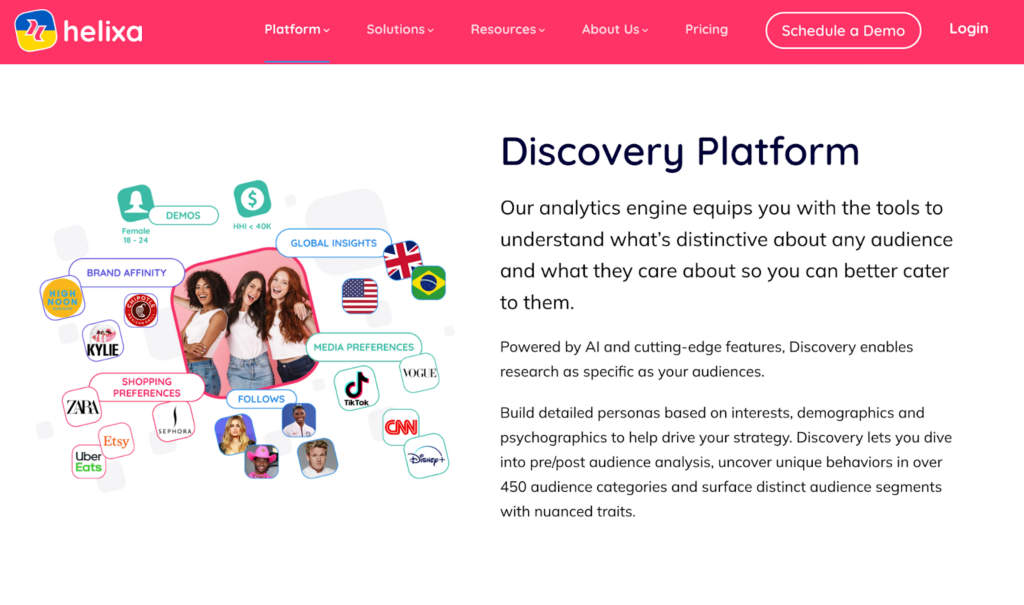
Top 5 Digital Product Management Trends for 2024
- Product Management /
If you thought the past few years were transformational, 2024 is poised to take it up a notch! While concerns of recession linger and marketing budgets remain tight, opportunities abound for product organizations willing to stay laser-focused on customer value.
Now is the time for digital product owners, managers and their teams to step up. Those who effectively leverage emerging tech while nurturing a storytelling culture and reducing organizational friction will unlock innovation and growth in 2024.
The five trends we cover aim to equip your product team to maximize their impact in the year ahead. From evaluating generative AI’s possibilities to streamlining processes for alignment, various disciplines converge under product management’s banner on the mission to responsibly drive business success.
1. Implementing Structured Portfolio Governance for Innovation Investments vs Proven Value Streams
As product managers often focus intensely on their own offering, roadmap, and immediate customer base, it’s easy to lose sight of the broader business context. This risks suboptimal resource allocation and undermines bringing the company’s full capabilities to customers.
2024 sees a major push towards coordinated planning, strategy, and governance across entire product lines. Feature prioritization techniques can guide product teams to double down on the highest value initiatives based on reach, impact, confidence and effort.
Product strategy ensures roles, segments, and priorities align across individual offerings sharing business objectives. Portfolio funnels impose structure on moving compelling ideas from proofs of concept to funded projects.
Cross-functional portfolio planning fosters making the right build, buy or partner decisions across product families while optimizing funding mixes of innovation investments versus proven revenue generators.
The product managers able to balance strategic thinking across portfolios with their specialized domain expertise in a given product will prove most valuable in driving decisions and outcomes.
2. Leverage Generative AI: Product Enhancements, Efficient Operations, and Next-Level Practices
Generative AI (GenAI) stands poised to make even bigger waves in 2024. These AI models that can generate new content, insights, predictions, and recommendations have exploded onto the scene.
As a product leader, you simply can’t ignore its huge potential. The question is not whether to leverage GenAI, but how – across three key areas:
1) In Products
GenAI unlocks new capabilities for your offerings. Whether it’s generating predictive insights, such as using Helixa for consumer intelligence, personalized recommendations, next-best actions, or even new content like images and copy, GenAI can open up unique value for customers.
Carefully evaluate use cases where GenAI can solve existing pain points or enable new solutions. Prioritize opportunities where self-sourced data gives a competitive edge. Start small with minimum viable capabilities, tracking value versus risk.

2) In Processes
Your internal teams can benefit enormously from GenAI. The technology can automate repetitive tasks, analyze data, review documents, optimize workflows, and more. Pay close attention to the product updates for your existing productivity tools. SaaS products, such as ClickUp, are adding AI-powered tools into their workflows to speed up tasks.
Pay attention to processes that remain manual, rely on multiple hand-offs between teams, or consume extensive employee bandwidth. Make sure to involve impacted teams early in scoping automation opportunities.

3) In Practices
Rethink what types of activities truly require human judgment from product managers versus what can be automated by GenAI. Administrative work, status reports, and requirement documents can potentially be generated by GenAI, enabling PMs to focus on higher-level strategic tasks.
As you explore GenAI applications, ground each use case with strategic business priorities while carefully evaluating value versus effort and risk. In 2024, product teams that successfully harness GenAI – both for customer experiences and internal leverage – will gain a strong competitive advantage.
3. Data Alone Isn’t Enough – Use Stories to Captivate Hearts and Minds
Data and insights are indispensable for good product decisions. But facts and figures alone often fail to spark that deep, emotional conviction within your team and stakeholders. To catalyze change and drive commitment, take a page from the storytellers’ playbook.
Impactful stories connect with what people care about – it’s that simple. Wrap your product vision, strategy and plans with inspiring narratives that resonate on a human level:
Connect with Customers First
Immerse yourself in discovery – understand real people’s wants, frustrations and delights. Building empathy for diverse users establishes authenticity no spreadsheet can manufacture.
For example, we worked with a fintech company launching a new budgeting app and conducted in-depth interviews with dozens of potential users across demographics. We uncovered a common frustration – most people felt overwhelmed tracking their spending and unaware where their money was going each month. Some felt embarrassed or ashamed over their perceived “lack of control.”
Armed with these powerful customer insights, we worked with the product and marketing teams to create a campaign focused on how the app helps anyone, no matter their financial expertise, master their money with ease. By spotlighting real problems and matching to emotional needs like empowerment, we forged an authentic connection beyond touting features alone.
The key is to continually engage with humans behind the data points. Stories rooted in deep customer empathy – their difficulties and aspirations – allow products to resonate at a profound level. Product managers who recognize humans can relate to stories more profoundly than data alone. Wield empathetic, insight-driven stories to establish the vital emotional buy-in for your vision.
Enrich Existing Data
Take those use cases, business cases, requirement documents fuelled by data – and bring them alive! Inject insights around user and buyer motivation while quantifying real-world impact.
For example, when presenting findings from a customer survey, don’t just share the stats. Supplement the hard data by explaining key user pain points in a relatable manner. Quote actual feedback verbatim to spotlight their difficulties more vividly. Visualize usage patterns over time to showcase struggles.
Then, quantify how your solution alleviates these pains through metrics directly tied to customer objectives. Whether it’s saving users 10 hours per week, improving client retention by 15%, or growing revenue by 5% – put numerical weight behind the story so stakeholders connect the dots between capabilities and concrete outcomes.
Elaborate on findings by:
- Describing customer sentiments in an impactful, even emotional manner: what frustrations or unmet needs are most acute?
- Analyzing research to pinpoint root causes behind user behaviors: what external or internal factors drive suboptimal patterns?
- Mapping product features and releases to measurable improvements on customer priorities: how will we move the needle on satisfaction, loyalty and growth?
Energize Roadmaps
Augment roadmaps and quarters with storylines – where are we headed and why should anyone care? Great stories telegraph meaning beyond the features and releases.
Of course, ground stories in truth. But tap into imagination, emotion and shared aspirations to turn your strategy into a movement people want to be a part of! Enlightened product managers recognize humans relate to stories more profoundly than data alone. Wield empathetic, insight-driven stories to establish the vital emotional buy-in for your vision going into 2024 and beyond.
4. Ensuring Ethical and Responsible AI Practices
Artificial intelligence holds significant promise but also brings to the fore ethical challenges concerning data privacy, transparency, and security. As organizations rapidly integrate AI/ML technologies into both internal operations and customer-facing functions in 2024, product teams shoulder responsibilities on two critical fronts:
Internal AI Practices – Compliance & Risk Mitigation
Product teams must conduct thorough reviews of data collection, model training processes, and algorithm usage to ensure alignment with company values, industry regulations, and legal/ethical standards in their operational regions. Identifying and mitigating AI risks safeguards the business.
External AI Offerings – Customer Trust & Protection
Especially for consumer/public-facing AI products like chatbots, intelligent analytics, or personalized recommendations, marketing responsible AI practices fosters customer confidence. Prioritizing data privacy protections and providing transparency establishes trust in AI’s societal impacts both now and in the future.
Astute product leaders integrate ethical AI oversight into broader business discussions. Establishing clear governance policies while highlighting the thoughtful benefits of AI paves the way for the convergence of technological promise and public interests. Navigate this delicate balance to sustain innovation, earning the trust of your customers.
5. Streamline Processes and Align Teams for Higher Product Velocity
Even the brightest product teams often struggle to reach their potential, bogged down by organizational obstacles. Conflicting priorities, misalignment across teams, and lack of executive support for the product mission slow progress to a crawl.
As a product leader, spur your group to peak impact by clearing a straight path:
- Secure Leadership Buy-In
Rally the executives around the product’s pivotal role in strategic growth. Educate them on product best practices and the damages of misaligned goals. Arm them to defend investments against short-term financial pressures. - Identify Top Distractions
Gather your product soldiers on the ground to spotlight top areas of misalignment and friction points. Get to the root issues impeding their focus, speed, and morale day-to-day. - Remove the Barriers
Fix dysfunctional hand-off processes between teams, optimize overly complex workflow requirements, shift misfit reporting lines – address the biggest productivity drags and culture sucks directly.
While pockets of distractions may always persist, minimizing needless internal barriers liberates products to deliver maximum customer value. Waste no time in 2024: galvanize executive support, understand real issues, and lead change. Your empowered team will reward you with their best work.
Guide Your Product Organization to Innovate
As technology introduces potential risks, this year calls for product management leadership to chart the course ahead. Seize the tremendous opportunities to create value through AI, while concurrently building trust and proactively mitigating downsides. Communicate your vision powerfully, but ensure that strategies are grounded in customer reality. Streamline processes to empower teams, yet integrate ethical review and oversight.
The products that will thrive are those that harness emerging technologies to solve real-world problems better, while simultaneously ensuring good data stewardship and a thoughtful societal impact. Rallied by compelling roadmaps, propelled by aligned organizations, and focused on customer needs – this is how product teams make a true difference.
Product managers play pivotal roles in translating business objectives into tangible solutions ready for market success. As you plan offerings leveraging trends like generative AI, develop governance policies and review processes alongside them. Enrich data with not just stories, but stories embodying your values. Eliminate distractions, but stay attuned to diverse stakeholder needs.
We have the privilege and responsibility to develop products pushing the frontier. With customer empathy, cross-functional collaboration, and ethical grounding at the helm – product leaders can fulfill this mandate to drive sustainable growth.